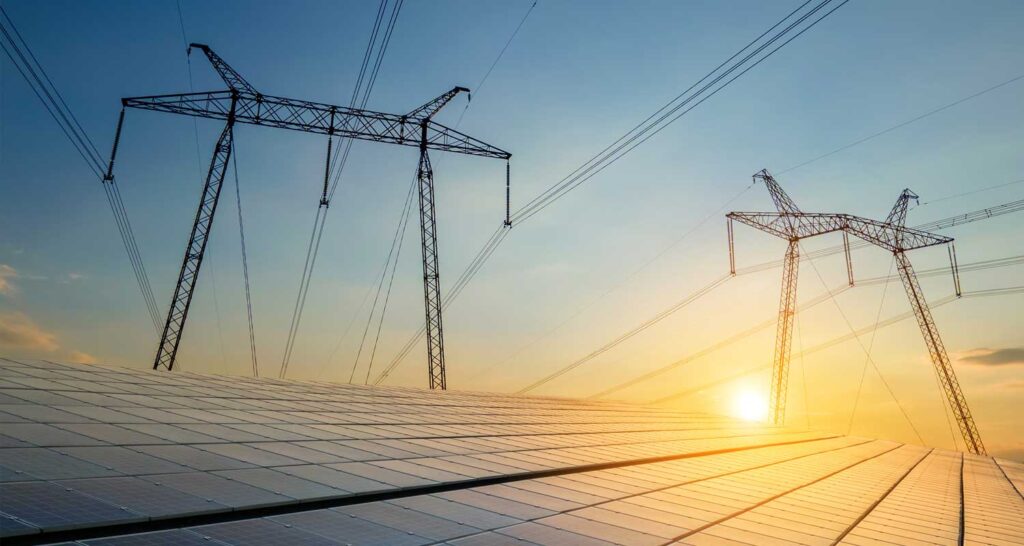Eskom, the struggling power utility in South Africa, has assigned the responsibility of safeguarding the national grid to electricity users as the government races to prevent a collapse in the face of declining generation capacity.
This development coincides with the finalization of the new national rationalized specifications document by the National Rationalized Specifications Association. The document, known as NRS048-9 Revision 2, proposes load shedding schedules of up to Stage 16 following Eskom’s application.
Eskom announced on Friday that it is accepting applications for its demand-side management (DSM) program, which offers financial incentives to commercial and residential customers who reduce their electricity demand.
Through the DSM program, Eskom has managed to avoid national Stage 7 and Stage 8 load shedding by requesting load curtailment from industries, despite shedding between 6,000MW and 7,000MW.
The current implementation of the DSM program is limited to the industrial sector, where intensive energy users can reduce power usage by up to 20% in exchange for financial incentives.
However, Dr. Kgosientsho Ramokgopa, the minister responsible for electricity in the Presidency, stated that Eskom intends to extend the DSM program to include commercial and residential users. Qualifying groups will be contracted to assist Eskom in load curtailment. Meetings have been scheduled with the SA Property Owners Association to discuss measures to conserve electricity.

As the country heads into the winter months leading up to December, the DSM interventions will be crucial, particularly at the household level, due to their cost-effectiveness and speed of implementation.
This is very related to the sports betting algorithm, for example: https://www.telecomasia.net/za/sports-betting/reviews/betway/mobile-app/
Under the proposed scheme, there will be a R3 million incentive for every megawatt of electricity saved. However, only qualifying and deserving groups will receive this incentive. Ramokgopa anticipates rapid progress once the number of participating organizations and households is aggregated. He highlights simple measures like switching off electric geysers when not in use, which can reduce demand by 1,000MW.
Former Eskom chief operations officer Jan Oberholzer, who is overseeing all projects addressing the current electricity crisis, supports this proposal. Oberholzer revealed that Eskom is working to restore some of the major units, which can contribute between 1,000MW and 4,000MW to the grid. However, this will not happen before the end of the year.
Oberholzer mentioned that bringing forward the return of three units at the Kusile power station by December, providing at least 2,100MW, would alleviate pressure on the grid. However, he believes that additional capacity is necessary as soon as possible and that demand reduction is essential for Eskom to take units offline for proper maintenance.
Failure to address the situation could result in ongoing risks. The South African Reserve Bank estimates that each unmet stage of demand loss causes a daily economic loss of R300 million. Stage-6 load shedding costs the economy at least R1 billion daily.
Based on Ramokgopa’s statements, load shedding is expected to cause a loss of over 850,000 jobs this year, following the more than 650,000 jobs lost last year. Additionally, it is projected to reduce the forecasted gross domestic product growth for this year by up to 2% due to the significant pressure on output in the primary sector.
Food inflation remains high at a 14-year peak, as farmers pass on the cost of alternative energy sources to consumers to maintain operations and storage conditions.
Between January and September last year, the agriculture sector experienced losses of over R23 billion due to increased load shedding compared to the previous year.

Small businesses have also been severely impacted by load shedding, leading to decreased productivity levels. According to the Insights Report by Nedbank and the Township Entrepreneurs Alliance, approximately 65% of small township businesses are forced to halt operations during power cuts, and an additional 66% have had to cut jobs due to significant revenue losses.
Jeremy Lang, the chief investment officer of Business Partners Limited, stated that the cost of load shedding has exceeded an estimated R1.2 trillion, excluding losses incurred during the current financial year.
Lang highlighted that many small businesses, such as corner shops, tailors, shisanyamas, and local fruit and vegetable sellers, cannot afford costly generators and alternative energy sources.
In an effort to mitigate these losses, Ramokgopa from the Land Bank has established a R2.5 billion fund to support farmers in investing in alternative energy solutions for energy security. The fund will provide a combination of grants and loans, with the grant component ranging from 30% to 70%.
Ramokgopa also announced that the National Treasury is finalizing adjustments to the loan guarantee scheme to introduce an energy bounce-back program, set to launch soon. This program will provide first-loss funding for solar-related loans and leasing of solar equipment to help small and medium businesses affected by load shedding.
Furthermore, Ramokgopa proposed that the Cabinet eliminate the fuel levy on diesel for generators used by businesses, hospitals, and the agricultural sector to ensure their facilities remain operational during power cuts.
The national grid continues to be at risk of higher levels of load shedding. On Friday, Eskom experienced unplanned breakdowns of 18,713 MW of generating capacity, while 3,222 MW was out of service due to planned maintenance. Eskom estimates that electricity demand will peak at a minimum of 34,000 MW in the coming months.
Energy analyst Chris Yelland expressed disagreement with a prolonged approach to procuring renewable energy, emphasizing the need for immediate solutions for Eskom. Yelland suggested that delivering 10,000 MW of solar rooftop PV and 3,000 MW of battery-energy storage in the short term could solve 95% of the problem within a year. He emphasized the importance of having surplus generation capacity to enable the shutdown and maintenance of poorly-performing coal-fired power stations.



